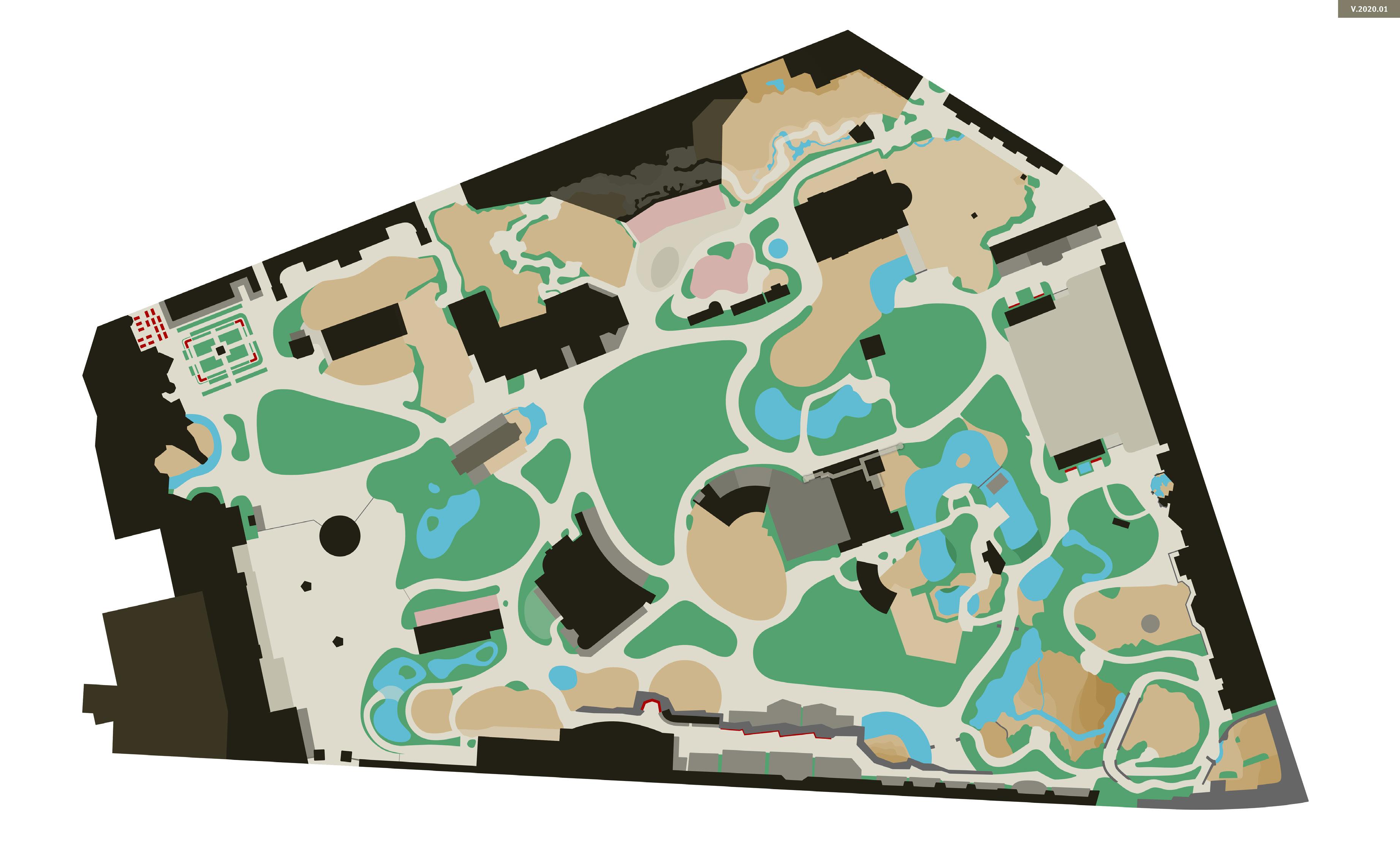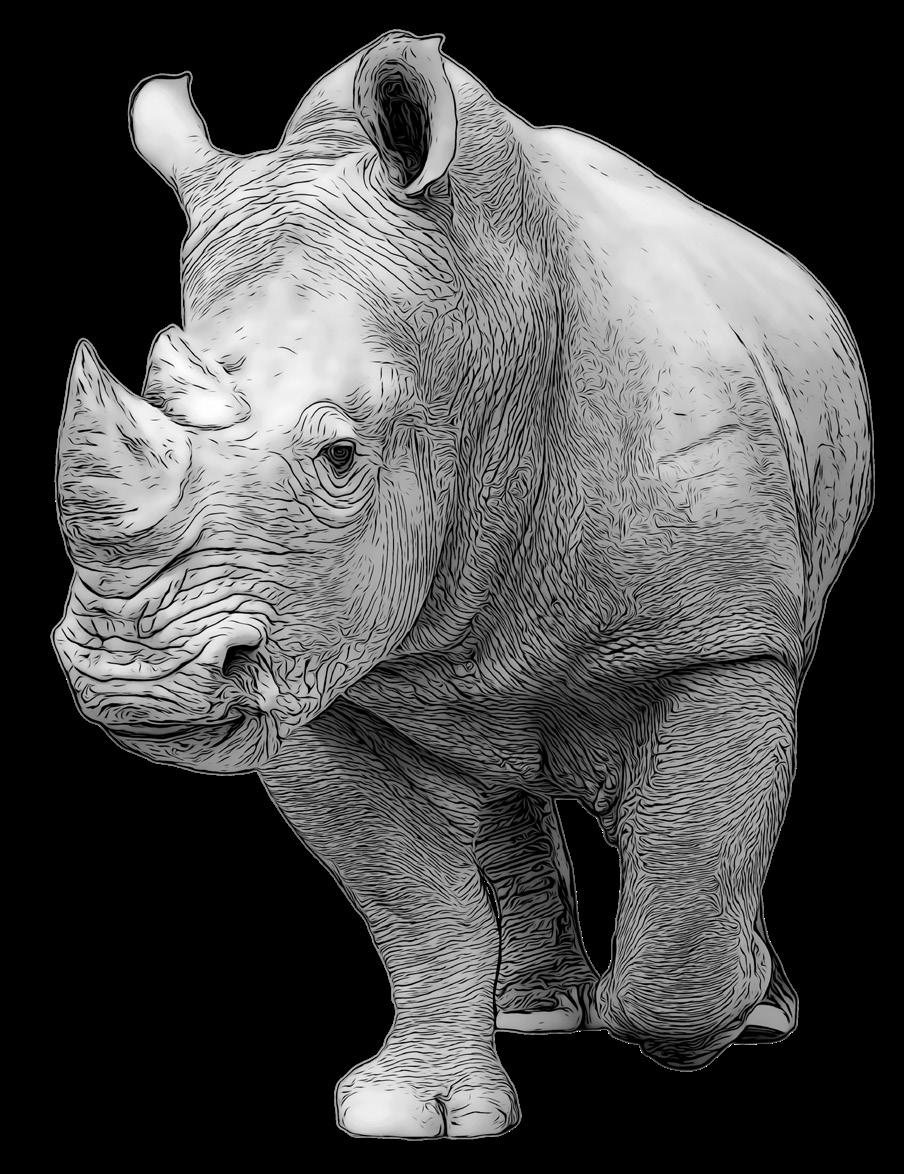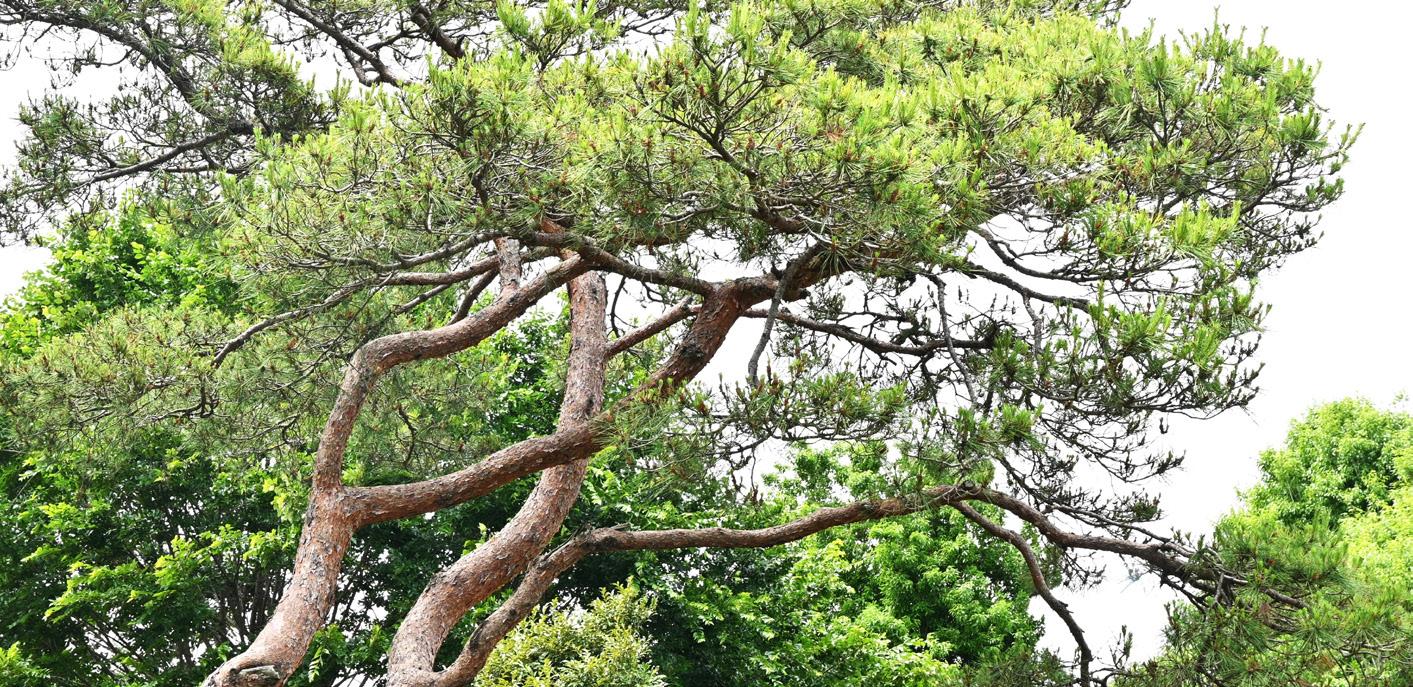SEB ANNUAL CONFERENCE
A ROOM WITH A ZOO
KONINGIN ASTRIDPLEIN 20-26
2018 ANTWERP, BELGIUM
08 JULY - 11 JULY 2025
SEBIOLOGY.ORG
#SEBCONFERENCE


SEB ANNUAL CONFERENCE
A ROOM WITH A ZOO
KONINGIN ASTRIDPLEIN 20-26
2018 ANTWERP, BELGIUM
08 JULY - 11 JULY 2025
SEBIOLOGY.ORG
#SEBCONFERENCE




On behalf of the editorial team at Conservation Physiology, I am pleased to invite you to explore some of the important research published in our journal as you walk through the Antwerp Zoo.
This pamphlet highlights key physiological studies that are essential for improving conservation efforts for the plants and animals you will encounter along the way.
Conservation Physiology is the leading journal dedicated to advancing conservation through a mechanistic understanding of how organisms, populations, and ecosystems respond to environmental stressors. The research we publish provides valuable insights into how physiological knowledge, tools, and concepts can be applied to understand and address conservation challenges.
For more information on the latest developments in conservation physiology and publishing with us, we invite you to visit the Conservation Physiology website.
Andrea Fuller Editor-in-Chief, Conservation Physiology
https://academic.oup.com/conphys





❶ Mandrills
❷ Koalas
❸ Black Pine
❹ Oriental Plane
❺ Elephants
❻ Rhinos
❼ Penguins
❽ Aquarium: Epaulette Sharks, Blacktip Reef Sharks, European Eels, Pumpkinseed Sunfish, Perch and Roach
❾ Lions
❿ Reptile house: Cane Toads, Tree Frogs, Hermann’s Tortoises, and American Alligators
⓫ Birdhouse: Zebra Finch


Wildlife translocation (moving animals to a new location) is a commonly used conservation management strategy, but if the animals become stressed these programmes can fail badly.
Conservation managers therefore need to understand how the different stages of translocation impact the stress levels of the animals.
Miles Woodruff and colleagues measured the levels of hormone metabolites in mandrill (Mandrillus spinx) faeces to determine the response to potential stressors during different stages of translocation. The mandrills were initially housed in a sanctuary then transferred to a pre-release enclosure in a national park in the Republic of Congo, then released into the forest.
The results of this study showed that although the first stage of translocation caused a significant amount of stress to the mandrills, they recovered quickly and there was no long-term impact on their wellbeing.
This study also shows the value of non-invasive research for monitoring stress levels during animal translocations.
Woodruff, M.C., Atencia, R., Cox, D., Woodruff, G.T., Wheaton, C.J., Lavin, S.R. and Setchell, J.M. (2023). Successful acclimatization of mandrills (Mandrillus sphinx) translocated to Conkouati-Douli National Park, Republic of Congo, as measured by fecal glucocorticoid metabolites. Conservation Physiology, 11(1), coad025.


Wildlife translocation is commonly used by conservationists to mitigate negative effects of habitat damage or loss, for example, following land clearance or bush fires.
However, the process of translocation induces stress in the translocated animals and may also impact the animals that are already living in that location.
Julian Beaman and colleagues investigated stress levels in a resident wild koala (Phascolarctos cinereus) population one year after a major translocation of other koalas, rescued from a bushfire, to their location.
They predicted that the resident koalas would show signs of stress and poor health. However, faecal stress hormone levels were not affected by the arrival of the translocated animals, and good levels of health were observed within the resident population. Most of the translocated koalas actually dispersed from their release site, reducing the impact on the resident koalas.


Credit: Robert Oswald
Austrian pine or black pine (Pinus nigra) is a common tree species across Southern Europe. In recent years the species has been increasingly affected by extreme summers and periods of drought. However, not all trees have been equally affected. Understanding the mechanisms that allowed some trees to fare better than others could help conserve the species.
Tadeja Savi and colleagues studied the differences between healthy trees that survived well after a severe drought in 2012, and those that were harmed. The researchers found that trees most affected by the drought transported water less efficiently for 7 years following the drought. This is likely because the xylem vessels that carry water were stronger in healthy trees, and less prone to damage. Healthy trees were also better at mobilising starch, which provides energy to support metabolism and growth.
Droughts may also have longer-term impacts. To protect their water transport system and preserve water, trees can close the pores on their leaves or needles (stomata), which limits water loss through evaporation. However, these pores also allow carbon dioxide intake for photosynthesis. Keeping them closed for too long means the tree cannot produce enough energy and will begin to starve. As a result, the damaged trees have lower sugar reserves and must keep their pores open more to compensate. This ongoing strain means the legacy of the 2012 drought is leaving the trees more vulnerable to the extreme weather conditions global warming is expected to bring.


The oriental plane (Plantus orientalis) is a fast-growing deciduous tree, which is naturally found in moist environments. The species is endangered in certain areas of Europe where climates are warm and dry.
Violeta Velikova and colleagues hypothesised that trees growing in drier areas (Italy) would have different adaptations compared to those found in more optimal cold and humid environments (Bulgaria).
The researchers found that oriental plane located in these two different environments had structural and functional differences, and responded differently to drought. When exposed to dry conditions, trees in Italy produced high quantities of isoprene: an antioxidant that protects the photosynthetic apparatus, helping the plants to cope during stress.
Thanks to these adaptations, the Italian trees were more resilient to drought than were the Bulgarian trees. The researchers suggest that trees grown in warm and dry environments are therefore likely to be more tolerant to climate change than trees grown in cold and humid conditions.
Physiological and structural adjustments of two ecotypes of habitats in response to drought and re-watering.


The Asian elephant (Elephas maximus) is an endangered species that is currently under threat from human disturbance. When elephants are stressed they are less able to reproduce in the wild, which puts them at a higher risk of extinction.
Ruchun Tang and colleagues investigated how much stress is caused by human disturbance, by measuring the levels of the stress hormone cortisol in elephant faeces. The levels of this common stress hormone increased substantially when existing tea plantations were expanded by humans.
The results of this research show that human disturbance presents significant environmental challenges to wild Asian elephants, which could lead to a decline in their populations.
This study also demonstrated the value of using non-invasive methods (measuring stress hormone levels in faeces) for informing conservation management strategies.


The white rhinoceros (Ceratotherium simum) faces persistent poaching driven by demand for its horns. Many reserves dehorn their rhinoceros populations in an attempt to reduce poaching, but it was not known how this intervention affected rhinoceros welfare and health, given that rhinos use their horns for accessing resources, during social behaviours and for defence.
Samuel Penny and colleagues measured the levels of various stress hormone metabolites, as a marker of animal welfare, in rhino faeces before and after dehorning.
The findings of their research showed that dehorning does not cause a chronic physiological stress response in the rhinoceroses. This research should increase the confidence of wildlife managers that dehorning is an acceptable approach to decrease poaching.


Ecotourism helps raise awareness of environmental issues and generates revenue to support conservation projects. However, the increased presence of humans in natural habitats can cause physiological stress in the animals we aim to conserve.
The African penguin (Spheniscus demersus) is a critically endangered species. Young chicks are unable to move away from stressors, such as human tourists. It is therefore important to measure the impact of human disturbance on physiological stress in these chicks in the wild.
Juan Scheun and colleagues monitored physiological stress in African penguin chicks by measuring the levels of glucocorticoids (stress hormones) in urofaecal samples - the combined excretion of urine and faeces typical in birds. Penguin chicks that had more exposure to humans had higher levels of glucocorticoids, suggesting these chicks were more stressed.
More research needs to be done to determine the long-term effects of ecotourism on native populations of African penguins.


Increasing carbon dioxide (CO2) emissions are making our oceans more acidic and are having a negative impact on the physiological performance of many marine species.
The epaulette shark (Hemiscyllium ocellatum) lives in shallow reefs and lagoons where it often experiences short periods of hypoxia, characterised by high levels of CO2 and very low levels of oxygen.
Dennis Heinrich and colleagues studied tolerance to prolonged hypoxia in epaulette sharks by measuring the efficiency of breathing in acidic ocean conditions.
Respiratory physiology was unaffected by hypoxia, suggesting that epaulette sharks may possess adaptations that allow them to tolerate high levels of CO2 (including levels that are predicted to occur in the ocean by the end of this century). Further research is required to determine if other types of shark are equally tolerant.

Heinrich, D.D.U., Rummer, J.L., Morash, A.J., Watson, S.-A. ., Simpfendorfer, C.A., Heupel, M.R. and Munday, P.L. (2014). A product of its environment: the epaulette shark (Hemiscyllium ocellatum elevated environmental CO2. Conservation Physiology


Sharks rely on rapid wound healing throughout their lives, for example, when injured by natural events or human activities. Knowledge about healing rates, recovery, and survival is important for assessing the impacts of habitat degradation and fishing stress on current shark populations.
Andrew Chin and colleagues studied blacktip reef sharks with a range of injuries including ‘umbilical scars’ (which heal naturally after birth), and shark finning (where the fin of a shark is cut off, usually to make sharkfin soup, and the shark is released back into the ocean). Their data suggests sharks can survive and recover from both small and severe wounds.
Important biological research can also involve humans having to handle wild animals to tag and monitor them. This study found that the survival of individual sharks depends more on levels of stress during handling, rather than the physical injury itself, thus contributing to ethical discussions around tagging practices.



With ongoing climate change, increased water temperatures pose a threat to aquatic ectotherms, including the critically endangered European eel (Anguilla anguilla). However, the mechanisms controlling thermal tolerance are unclear.
Débora Claësson and colleagues hypothesised that elevated temperatures lead to reduced cardiac function in European eels, meaning that oxygen delivery to tissues is insufficient to meet energy demands.
To test their hypothesis, oxygen consumption was measured across a wide range of temperatures, along with cardiac output during rest and activity. Oxygen consumption was not affected by temperature, suggesting that thermal tolerance is not defined by oxygen transport capacity.
Further research into other possible thermal tolerance mechanisms may increase our understanding of heat stress physiology in European eels, and ultimately help efforts to conserve these endangered fish.



Wild animals are exposed to multiple stressors, including parasites, that can affect their responses to environmental change. Understanding how ectotherms, such as fishes, will react to the combined stress of parasites and higher average temperatures, can help predict the impact of extreme events such as heat waves on populations.
Jérémy De Bonville and colleagues exposed pumpkinseed sunfish (Lepomis gibbosus) to a range of temperatures before measuring their thermal tolerance and parasite load. Fish that were more heavily infected had reduced thermal tolerance, suggesting that the combination of parasite infection and high prolonged average temperatures can affect fish thermal tolerance and survival.
This research emphasises the need to better understand the concomitant effects of stressors on health outcomes in wild populations.


The vast majority of life on earth relies on natural cycles of light and dark to synchronize behavioural and physiological processes with the environment, however artificial light at night (ALAN) has the potential to disrupt circadian and circannual rhythms.
Anika Brüning and colleagues investigated the effect of artificial light at night on European perch (Perca fluviailis) and roach (Rutilus rutilus) by measuring nocturnal melatonin and reproductive hormones in different light conditions.
Although melatonin concentrations were not affected by artificial light at night, reproductive hormone levels were reduced under artificial light, suggesting that artificial light at night can disturb biological rhythms in fish in urban waters.



Chemical immobilization of lions is an essential conservation management tool. It allows us to move lions (for example, to zoos, or between isolated populations to maintain genetic diversity), collect biological samples, attach radio-tracking devices, and treat injured individuals.
But how do the standard drugs used to immobilize lions affect their physiology?
Ashleigh Donaldson and her colleagues showed that the drugs cause adverse physiological effects, including severe hypertension and skipped heart beats.
Much more research is needed to determine the impacts of these drugs on the health of lions and to develop better drugs that do not cause these adverse effects.



Cane toads (Rhinella marina) are one of the world’s most successful invasive species. Native to Central and South America, they are now found in more than 40 counties across a range of environmental conditions. Understanding the ability of cane toads to acclimate to new environments could help conservationists manage non-native populations.
Samantha McCann and colleagues investigated whether cane toad populations taken from different locations across Australia and Hawai’i possess the ability to acclimate rapidly to colder temperatures, or if this physiological plasticity only occurs in populations from cooler regions.
The ability of cane toads to acclimate to a cold environment was measured using the “righting response”, which measures the time it takes the toads to regain an upright posture when exposed to low temperatures. The researchers found that toads from cold and wet environments acclimated rapidly to colder conditions, while those from hot and dry environments did not.
Understanding that only certain populations can acclimate quickly to the cold can help predict patterns of where cane toads may move and establish in the future.




Amphibians across the globe are under threat. Climate change and infectious diseases, like chytridiomycosis (a devastating novel fungal skin disease), are causing significant declines in amphibian populations worldwide. Like in humans, a frog’s skin is its first line of defence against pathogens . To keep their skin healthy, frogs slough –shed (and eat!) their entire outer skin layer – every few days. However, it is not known how sloughing influences the abundance of microbes on the skin, or how environmental conditions influence sloughing frequency.
Rebecca Cramp and colleagues showed that sloughing immediately decreased the abundance of bacteria on the skin of the green tree frog (Litoria caerulea), but bacterial levels increased again rapidly in the days following a sloughing event. They also showed that sloughing occurred twice as often in frogs in warmer environments than those in cooler areas, with higher temperatures also promoting a greater abundance of bacteria on the skin.
Their work suggests that sloughing is important for periodically ‘resetting’ microbial numbers on the skin of frogs. Regular sloughing prevents microbial overgrowth and promotes a healthy skin microbiome. Sloughing may also be an effective way for some frogs to protect themselves against cutaneous pathogens, such as those responsible for chytridiomycosis.



Wildfires threaten the survival of tortoises living in many habitats, including Hermann’s tortoises (Testudo hermanni hermanni) in the Mediterranean region. Assessing survival ability is important for species conservation. Fortunately, many adult tortoises have been shown to survive such devastating fires.
In order to determine how survivors were affected, Stephane Lecq and colleagues compared the body condition of tortoises in intact and burnt habitats.
They found no differences between the two groups of tortoises, suggesting that tortoises are able to cope with fires. In a follow up study, the researchers monitored Hermann’s tortoises for two years following a 2021 wildfire. Surviving tortoises were able to maintain their body condition, likely by selecting favourable, less disturbed microhabitats.
Together, these studies suggest that tortoises should not be translocated from burnt to intact habitats. Indeed, the survivors are essential for rebuilding populations in burnt areas. The research also suggests that burnt habitats are suitable locations for conservation programmes that aim to increase the number of individual tortoises in a population (e.g. by captive breeding and release).



Wildlife health can be assessed using portable devices such as ‘point-of-care’ blood analysers, which allow researchers to take physiological samples and analyse them on-site. These devices, however, do not work properly in poor environmental conditions, for example in heavy rain or when the temperature is very high or low.
Matthew Hamilton and colleagues have investigated the possibility of taking alternative samples (e.g. plasma instead of whole blood) from American alligators (Alligator mississippiensis) to see if these samples can be ‘banked’ for off-site analysis later. Researchers estimate the health of an animal by measuring changes in blood parameters, such as the levels of oxygen and carbon dioxide and amount of lactate. Lactate levels are normally kept within a certain range when an animal is healthy, so high levels of lactate in the blood can indicate that an animal is stressed or unwell.
This study demonstrated that plasma samples can be stored and analysed to give accurate readings of lactate levels, which allows researchers to estimate the health status of an animal even if they cannot analyse samples on site.




Parasites in bird nests can affect bird reproductive success, which is especially concerning for threatened species. Permethrin, a common insecticide, is often sprayed on birds’ nests to control these parasites, but its effects on bird health and reproduction need further study.
Mariana Bulgarella and colleagues tested the impact of permethrin-treated nest material on zebra finches (Taeniopygia guttata) over two generations in a controlled lab setting. They monitored key outcomes including the number of eggs laid, time from laying to hatching, hatching success, fledgling weight, and the sex ratio of chicks, comparing nests built with permethrin-treated materials to those treated just with water.
They found that nests treated with permethrin increased hatchling numbers in the first generation, but reduced fledgling success in the second. Hatchlings exposed to permethrin also had lower body masses compared to control hatchlings, but the decrease was only significant in the second generation.
This work suggests that while permethrin may initially help by controlling parasites, it has some negative sub-lethal effects, especially over generations, which could potentially undermine chick survival later on. While careful use of this insecticide may still be beneficial for conserving threatened birds by reducing nestling mortality from parasites, its effects on chick survival emphasise the importance of long-term evaluation of insecticide use and informed application in conservation programmes.
Bulgarella, M., Knutie, S.A., Voss, M.A., Cunninghame, F., Florence-Bennett, B.J.,
Sub-lethal effects of permethrin exposure on a passerine: implications for managing ectoparasites in wild bird nests. Conservation Physiology, 8(1), coaa076.


Storing seeds in seed banks is vitally important for conserving plant species: seed banks can preserve the DNA of endangered species, provides a source of seeds for restoration efforts, and is important to food security. Seed preservation relies on the ability of seeds to remain in “suspended animation” for long periods of time, given the right environmental conditions.
Da-Eun Gu and colleagues investigated the effects of storage temperature on the viability of seeds in Japanese red pine (Pinus densiflora). Seeds were collected and stored for 20 years at 25°C, 4 °C and at -18°C. The researchers found that 89% of seeds kept at -18°C germinated. This is especially impressive given the rate for new seed germination was 91%, meaning there was very little loss in viability. Of the seeds kept at 4°C, 44% germinated, while no seeds stored at 25°C were viable.
Identifying the best conditions for keeping seeds viable is essential to the success of seed banks. Stored seeds act as a source of genetic diversity, enabling plant breeders to produce new varieties of plants which are adapted to survive changing environmental conditions or new diseases.

The following species have been removed from Antwerp Zoo since this project began; however, as their research summaries were already prepared, we’ve included them here as bonus content.


Stress levels in animals are usually assessed by measuring changes to the levels of hormones, such as cortisol, in metabolically active tissues. However, measuring the levels of hormones in aquatic fin-footed mammals (pinnipeds) such as sea lions and seals is difficult. Capturing and handling the animals can cause stress, thus altering the results. One possible way to obtain a less invasive measure of stress in wildlife is through measuring hormone levels in hair.
Mandy Keogh and colleagues explored whether hormone concentrations in hair could be used to assess stress in three otariid species: Steller sea lions (Eumetopias jubatus), California sea lions (Zalophus californianus), and northern fur seals (Callorhinus ursinus). Hair samples from wild-caught animals were analysed for cortisol, and levels were compared to see if there was variation between species, age, sex, or sampling location.
They found that hair cortisol levels varied by species and location, suggesting it could be a useful marker of chronic stress. This suggests hair hormone analysis could be a useful non-invasive tool for monitoring long-term stress in wild marine mammals. This method could help conservationists evaluate the impact of physiological stressors and improve species management.
Bonus content:

The following species have been removed from Antwerp Zoo since this project began; however, as their research summaries were already prepared, we’ve included them here as bonus content.
This booklet would not have been possible without the generous support and hard work of many individuals.
We extend our thanks to Conservation Physiology’s Editor-in-Chief Professor Andrea Fuller, and Bridget O’Boyle Assistant Editor for Conservation Physiology. Their support identifying the featured articles, liaising with authors and editing and proofreading the summaries was invaluable.
We are also grateful to Rebecca Ellerington and Ana Colombo from the SEB team for coordinating the project, managing communications, and proofreading the content.
Sincere thanks to Robert Wood, our talented designer, for bringing the booklet to life in such a beautiful way.
Of course a special thank you must go to our amazing volunteer contributors who summarised the research articles:
● Professor Sheila Amici-Dargan from University of Bristol and SEB Outreach, Education, and DiversityTrustee
● Dr Saeed Shafiei Sabet, University of Guilan
● Dr Stuart Thompson, University of Westminster
● Ana Colombo, SEB
● Professor Andrea Fuller, Conservation Physiology
Finally, thank you to all the authors of the Conservation Physiology papers featured in this booklet. Their enthusiasm in allowing us to share their work in this way, help in refining the summaries, and the fantastic images they provided of the animals, plants, and researchers involved is immensely appreciated.
If you’ve got exciting research that could make a difference to conservation, there are many reasons to choose Conservation Physiology:
● Community journal.
● Supportive of early career researchers.
● High-quality research relevant to conservation policy.
● Expert, field-defining editorial board.
● Rigorous, constructive peer review.
● Dedicated support from the editorial office.
● Range of article types.
● Committed to diverse, transparent and ethical publishing practices.